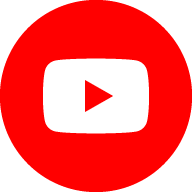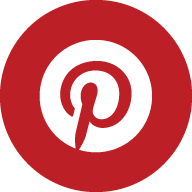In this first of two parts, we look at the role of lean visual management tools in a manufacturing environment. The second part will follow and covers the lean tools available to you specifically concentrating on lean manufacturing production boards and relevant lean accessories.
Lean and Agile processes consist of projects to make your business more productive, competitive, and, well... Lean.
Every project needs careful planning, execution and evaluation. There are many tools you can use for this, from spreadsheets to project applications, but the most important tool in project management is visualisation.
 People process visuals up to 60,000 times faster than text. We remember on average 20% of what we read and 37% of visual images we see. Visuals often immediately provide the context that we otherwise need to provide with text. Visuals bring a concept to life. Projects planning involves planning of the time dimension, interrelationships between tasks, priorities, objectives, deadlines, bottlenecks, etc., all of which become clear in an instance if made visual. We immediately associate the use of the colour red, exclamation marks and traffic lights with urgency, risk and danger, attention.
People process visuals up to 60,000 times faster than text. We remember on average 20% of what we read and 37% of visual images we see. Visuals often immediately provide the context that we otherwise need to provide with text. Visuals bring a concept to life. Projects planning involves planning of the time dimension, interrelationships between tasks, priorities, objectives, deadlines, bottlenecks, etc., all of which become clear in an instance if made visual. We immediately associate the use of the colour red, exclamation marks and traffic lights with urgency, risk and danger, attention.
Lean and Agile processes aim to eliminate what is wrong and do what is right. Visualisation helps to show clearly and instantly what is wrong and what is right, what is to be done, being done and has been done and what critical factors influence this. It speaks to everyone at every level; you don’t need to be a linguist or polyglot to understand it. It invites people to interact and communicate.
Lean processes need a problem solving culture in the organisation. The improvement processes are most effective if they do not need to be instructed every time again, but, instead, are being acted upon immediately by those who see the problems and are instrumental to the solutions. Factory Operatives will not easily sit at a computer or paperwork, spot a problem that is wrapped in a text and write down a solution to the problem. But they will more readily point at a visual and mark up a problem and possible solution for that on a lean visual management board.
Visualisation focuses the mind and, with the right visual management tools, focuses it on problem solving and improvement. Visual management empowers and provides ownership by giving responsibility and accountability. It stimulates a team approach to problem solving, and teams are stronger than individuals.
Visual Management aims to make problems easy to identify and solutions easier to develop. The tools for Visual Management must be simple to achieve this.
Examples: Use generally accepted colour codes – Green for OK, Amber for Attention, Red for Problem or Stop, use generic signage for PPE, First Aid, Hazards, Restrictions and Risks. Use graphics instead of text. If the subject of the process is a particular machine, use a picture of the machine to make it instantly recognisable, highlight or colour code the problem area, use clear, concise header texts in large font sizes, leave off irrelevant graphics, use arrows for directions
Tip: Ask an outsider to look at the visuals and tell you what they see. If your visuals are good they will be able to give you the correct answer instantly
Visuals are only easier to process and remember if they are simple. Visual Management tools must also be easy to use. The graphics may be easy to understand, but unless the response is easy to add it will lose some of its value.
Examples: Use sticky notes and ready-made symbols as response tools. Identify response boxes. Use coloured markers for responses and a layout with a logical flow.
Tip: Ask the team to design process specific symbols and indicators. If these are made to their design they will immediately recognise them.
 Lean requires a problem solving culture across the whole organisation. Participation in the processes is therefore critically important and Visual Management tools should invite people to participate in the process by adding their own input.
Lean requires a problem solving culture across the whole organisation. Participation in the processes is therefore critically important and Visual Management tools should invite people to participate in the process by adding their own input.
Example: Use team meetings to work on the visuals. Reward participation. Make sure management of every level participates. Make participation quick, easy and enjoyable. Create space for each individual to interact.
Tip: Use personalised response markers to identify the individual. This will create a desire to participate for others and offer an appraisal tool at the same time.
Finally, problems are best solved if they are clearly defined. Visualisation can help to define problems by “boxing” them, by setting boundary lines around the problem – what is inside is part of the problem, what is outside is not but may be part of another problem.
Example: Use coloured floor tape to define areas. Edit out areas that are not part of the focus area from images. Colour code the areas, machines or tools in the same colours as visualised, keep the visual in or close to the areas they relate to
Tip: Use Meeting Cells, Obeya (War) rooms, KPI Centres etc only for metrics that cannot be shown in individual areas and create Visual Management tools in the areas wherever possible.
Part two of 'Lean Visual Management Boards' will look at the lean tools available to you specifically concentrating on lean manufacturing production boards and relevant lean accessories.
If you are interested in looking at our gallery of lean visual management board designs, please click here
The gallery includes many of the usual suspects: 5S whiteboards, Kaizen boards, Health and Safety Notice boards, Problem Solving boards, Continuous Improvement boards and many production planning examples.




If you are interested in mobile lean visual management board solutions please click here
All these standard mobile options are available with your own artwork designs.
For lean accessories, please click here. This is our printed magnets section including happy and sad magnetic indicators and magnetic post notes.
The following link gives a general overview of the lean visual management boards. View here






